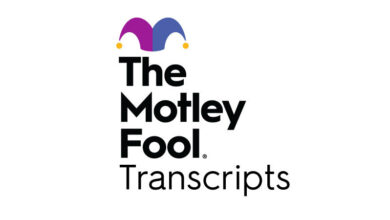Conservatism: De-Risking the Profitability Factor

Profitability metrics are often the main focus in the search for high-quality stocks. But Profitability is not a defensive factor and may expose investors to a company’s aggressive profit-chasing, among other unintended risks.
So, how can such risks be mitigated? By incorporating an additional quality dimension that we classify as Conservatism. By combining Profitability and Conservatism, we can reduce a portfolio’s downside risk and enhance its risk-adjusted returns over the long run.

Profitability Isn’t “Defensive”
Profitability and Quality are often used interchangeably. That’s understandable. Several influential academic studies, including Eugene F. Fama and Kenneth R. French’s five-factor model, feature Profitability as an equity factor. Outside of academia, however, Quality has a broader definition that extends beyond simple Profitability. Thematically, Quality is a “defensive equity factor” that should provide downside protection during bear markets.
This raises the question: Does Profitability offer similar downside protection? To answer this, we examined the historical performance of various factor strategies using several conventional industry Profitability metrics. These include Fama and French’s Profit, Return on Equity (ROE), Return on Invested Capital (ROIC), and Return on Assets (ROA). We sorted and ranked all stocks within the Russell 1000 universe according to their Profitability scores and then constructed factor-mimicking portfolios by taking the first quintile of stocks with the highest scores and weighting them equally. We rebalanced the factor strategies on a monthly basis and calculated their performance from January 1979 to June 2022.
Historical Performance of the Profitability Factor
| Fama–French Profit | ROE | ROIC | ROA | Russell 1000 | |
| Annualized Return | 14.2% | 14.2% | 14.0% | 13.4% | 10.1% |
| Annualized Volatility | 17.2% | 17.4% | 17.1% | 17.3% | 15.3% |
| Sharpe Ratio | 0.58 | 0.58 | 0.57 | 0.53 | 0.39 |
| Maximum Drawdown | –53.6% | –55.3% | –53.0% | –61.6% | –51.1% |
| Upside Capture Ratio | 1.12 | 1.14 | 1.12 | 1.08 | – |
| Downside Capture Ratio | 1.03 | 1.05 | 1.03 | 1.02 | – |
Our analysis shows all four Profitability strategies generated positive excess returns relative to the Russell 1000. But they all experienced higher maximum drawdowns than the benchmark and had a downside capture ratio over 1. As such, the Profitability strategies failed to provide downside protection.

The Case for Conservatism
These results demonstrate that the profit-centric view of Quality can lead to higher downside risk. Why? Because the overemphasis on Profitability encourages firms to take on excessive leverage and conduct empire-building activities, among other profit-chasing pursuits. A profitable but highly levered firm may have greater default or bankruptcy risk when financial stress increases amid economic crises.
Minimizing such risks requires a multi-dimensional approach that incorporates Conservatism into the Quality design. We look for firms with high levels of profitability that also exhibit greater financial conservatism. That means lower leverage, stronger balance sheets, more conservative asset growth, etc.
To illustrate the process, we examined the performance of various Profitability and Conservatism metrics during the Global Financial Crisis in 2008 and the COVID-19 crisis in 2020. The following chart shows the annualized return spreads between equally weighted top and bottom quintile factor-mimicking portfolios during the market crashes. We found that Profitability metrics generated negative return spreads. For instance, ROE, ROIC, and ROA had return spreads of –25% to –37% during the recent COVID crisis. By contrast, all Conservatism metrics had positive return spreads during both stress events.
Profitability vs. Conservatism during Crises

Source: Northern Trust Quant Research, FactSet, Russell 1000
Next, we demonstrated the defensive characteristic of Conservatism with scatter plots and fitted polynomial curves for both Profitability and Profitability Plus Conservatism. The fitted curves illustrate that the convexity of Profitability improved from –0.11 to +0.04 when it was combined with Conservatism. The positive convexity, or smile effect, is the defensive feature that drives the factor’s outperformance in both up and down markets.
Convexity of Factor Returns

Source: Northern Trust Quant Research, FactSet, Russell 1000
Finally, we updated the first chart by adding our Profitability Plus Conservatism portfolio. We found that the composite factor offered much better downside protection and risk-adjusted returns than the more simplistic Profitability metrics. The Profitability Plus Conservatism portfolio had a lower maximum drawdown and higher risk-adjusted returns.
The Profitability Plus Conservatism Factor
| Fama– French Profit |
ROE | ROIC | ROA | Comp- osite Profit- ability1 |
Profit- ability + Conserv- atism2 |
Russell 1000 |
|
| Annualized Return |
14.2% | 14.2% | 14.0% | 13.4% | 14.1% | 15.0% | 10.1% |
| Annualized Volatility |
17.2% | 17.4% | 17.1% | 17.3% | 16.9% | 16.6% | 15.3% |
| Sharpe Ratio |
0.58 | 0.58 | 0.57 | 0.53 | 0.58 | 0.65 | 0.39 |
| Maximum Drawdown |
–53.6% | –55.3% | –53.0% | –61.6% | –51.8% | –49.0% | –51.1% |
| Upside Capture Ratio |
1.12 | 1.14 | 1.12 | 1.08 | 1.10 | 1.13 | – |
| Downside Capture Ratio |
1.03 | 1.05 | 1.03 | 1.02 | 1.01 | 0.99 | – |
2. Profitability with Conservatism consists of equally weighted profitability metrics and conservatism metrics.
Source: Northern Trust Quant Research, FactSet
Conclusion
Academic literature may treat Profitability and Quality as synonyms, but our research shows they are far from analogous. High-Profitability stocks can suffer from excessive leverage, aggressive business models, and so on. When crises come, they may not provide much of a safety net.
But Conservatism can add that extra dimension to Quality, one that can potentially deliver higher risk-adjusted returns.
Further Reading
Fama, Eugene F., and Kenneth R. French. “The Cross-Section of Expected Stock Returns.” The Journal of Finance.
Novy-Marx, Robert. “The Other Side of Value: The Gross Profitability Premium.” Journal of Financial Economics.
Hsu, Jason, Vitali Kalesnik, and Engin Kose. “What Is Quality?” Financial Analysts Journal.
If you liked this post, don’t forget to subscribe to the Enterprising Investor.
All posts are the opinion of the author. As such, they should not be construed as investment advice, nor do the opinions expressed necessarily reflect the views of CFA Institute or the author’s employer.
Image credit: ©Getty Images/ photonaj
Professional Learning for CFA Institute Members
CFA Institute members are empowered to self-determine and self-report professional learning (PL) credits earned, including content on Enterprising Investor. Members can record credits easily using their online PL tracker.





